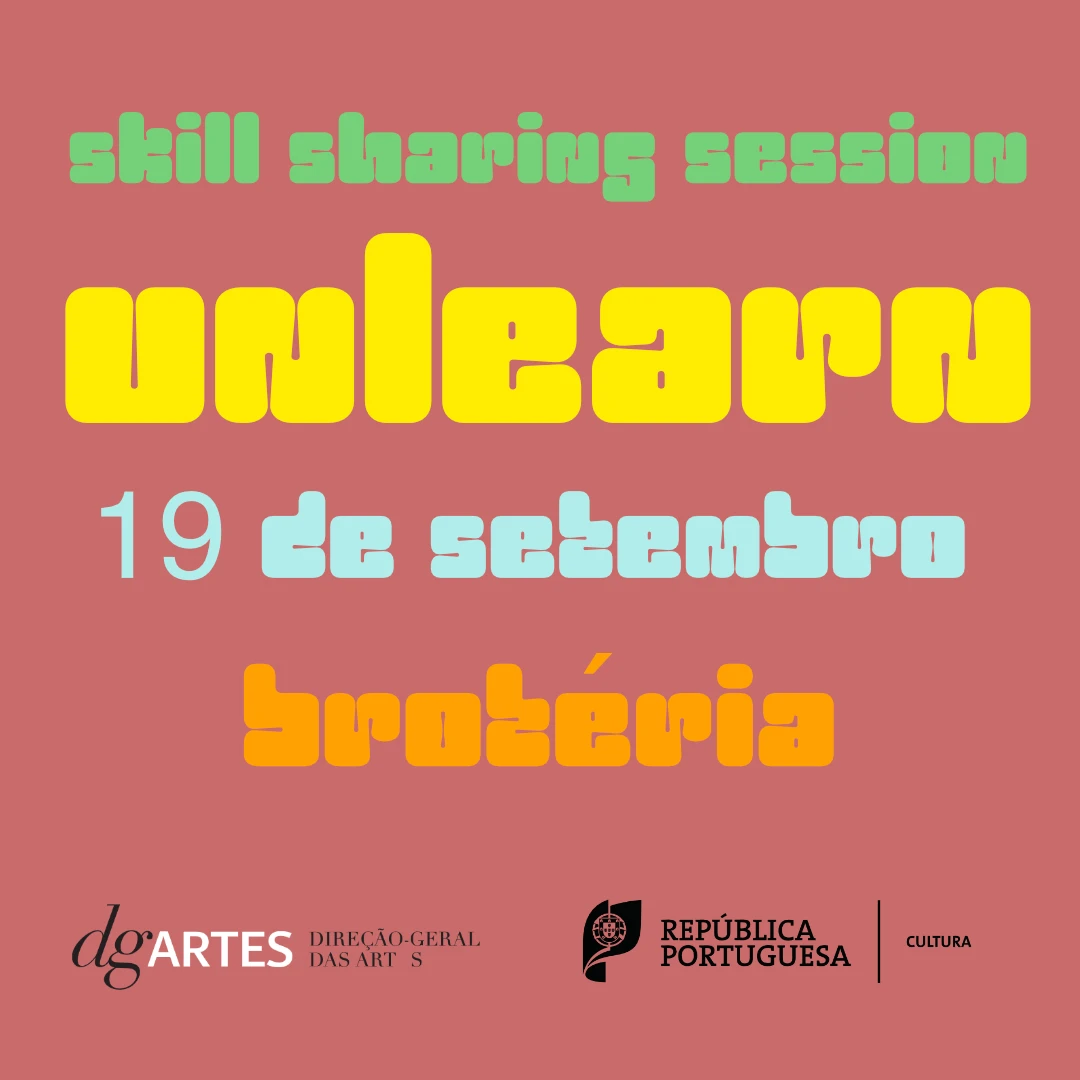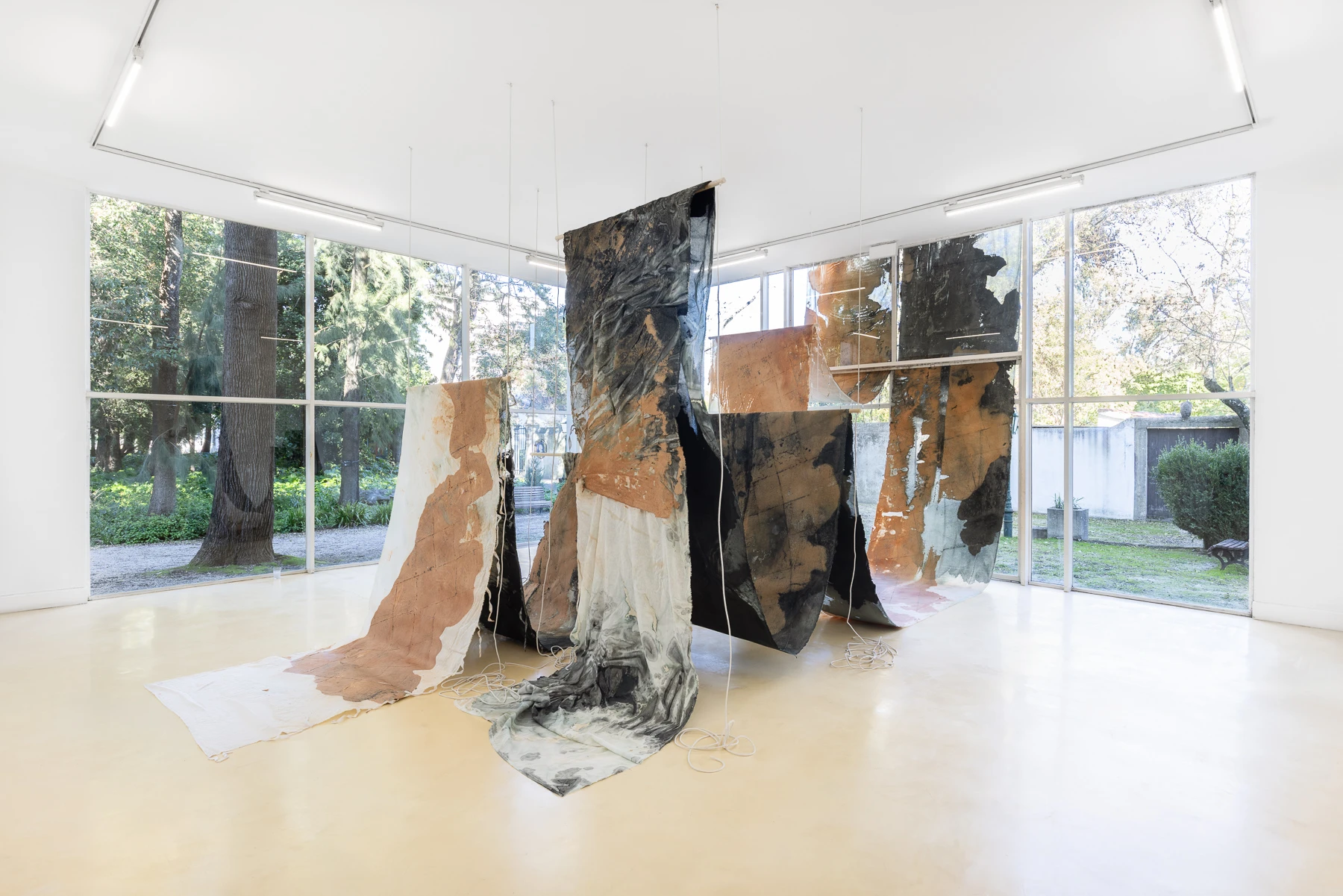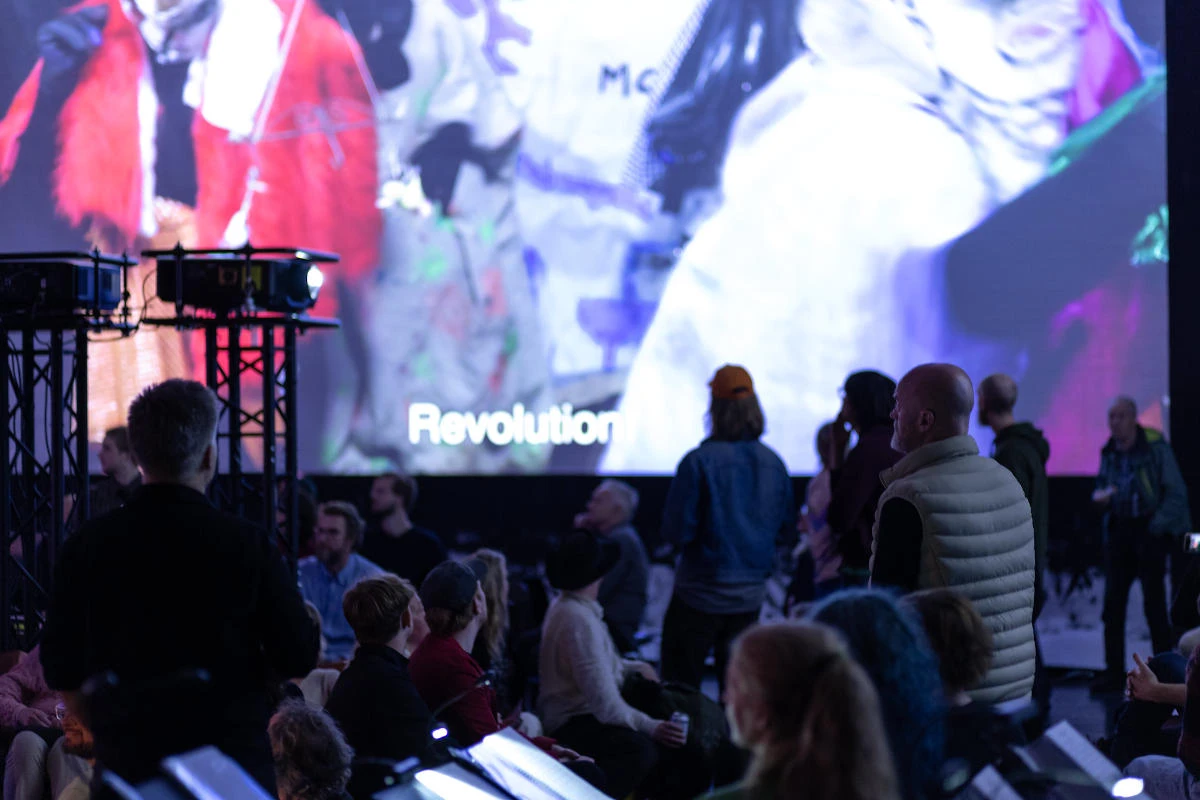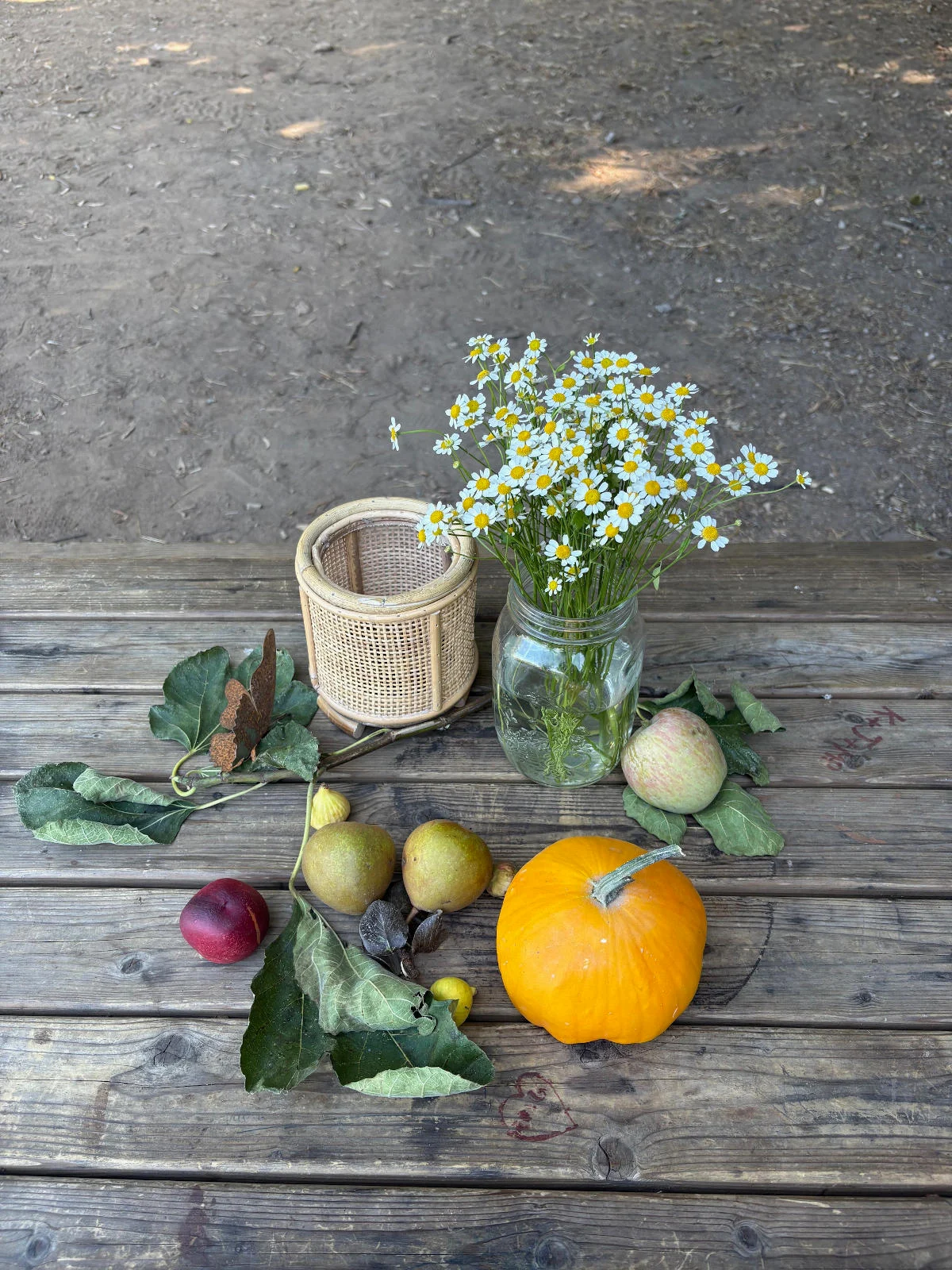article
Jardim das Artes e das Letras, in Viseu
"JAL's ambition has a very precise and regulated basic purpose, related to audience development and the promotion of culture as a fundamental aspect of lifelong learning."
It begins like so:
“1
The child walks on the field. The child stops in front of a half-open gate. It's the gate of a large farm. The child enters. Inside, there is a huge dog.” (Hatherly, 2025: 15)
Because everything, in fact, begins like so: like a child faced with great astonishment.
And this wonder has trees and sound; it has wind and leaves burned by the sun.
In the clearing opened by the fig trees and oaks, the laurels and lime trees…
(Were there linden trees? I don't remember their sickly-sweet smell, but in a forest, there is always a linden tree or two for bees and herbal teas.)
… daydreaming is possible when the sun sets, and summer nights seem like a treat to a day of intense heat and sun.
In this space, cleared by the trees, there's a stage. Tó Trips rehearses a few chords on the guitar, adjusts the sound, tightens the strings, and taps lightly on the microphone. He's vaguely distant; we, seated on the wooden benches, talk about life, with floral arrangements of rosemary, pumpkins, pears, fig branches and leaves, and mother-of-pearl shells from eaten oysters, ensuring a pleasant atmosphere.
We're in Viseu, in Mata do Serrado, but Tó Trips's songs bring to mind Lisbon, with its ferry piers, the dirty streets of Alfama and Bairro Alto, the smell of burnt diesel on Rua do Alecrim, and the timid lapping of the Tagus's waves. There are no seagulls or trams, and yet we see them here, so close, brought by the vibration of electric guitars, which reverberate through the trees and ghosts of this farm, forgotten for decades.
Day and night, the clearing doesn't fill up. But the enclosure is well-stocked, and those who are there are there out of pleasure and generosity. It doesn't fill up because Rosalina the pig "goes to the hairdresser every Friday to get a makeover" (Hatherly, 2025: 19). And on Saturdays, Rosalina types. That's why she can't. Writing is very difficult. Even if it's just writing a little about this and a little about that. Even if it's just saying this and then this. Even if it's, ultimately, doing something so-so. Writing is for the resistant.
The living culture that exists in Viseu is greatly promoted by Sandra Oliveira. The Jardim das Artes e Letras (JAL), which she founded and directs, is a sequel to the oft-remembered Jardins Efémeros (Ephemeral Gardens). Many still mourn the end of this festival, which brought so many names in experimental music and sound art to Portugal, and which died due to a lack of local support and interest.
However, JAL's ambition has a very precise and regulated basic purpose, related to audience development and the promotion of culture as a fundamental aspect of lifelong learning and the creation of a new kind of citizenship more attentive to ecological thinking and the art of living. The many workshops, performances, and conversations planned have precisely this purpose, making childhood the starting point for the development of the future student, professional, voter, and citizen. Informal pedagogy is as necessary as formal pedagogy in schools.
Ana Hatherly's quotes are not in vain. Tisanas, the famous book of experimental poetry she wrote over the years, serves as a guide and opens the critical and poetic imagination so essential for a good, frank dialogue about the "state of things." Yoko Ono's activism is also remembered when the fight for peace seems utopian, when war seems the new normal, and the atomization of spirits shrinks within itself, at home, behind smartphone screens, oblivious to the world's suffering. Both signal that progress is not so much about the goals to be achieved, but about the path taken to them, attempted daily, practiced in community, even if the end results in failure.
Nothing is good or bad in this garden. Aesthetic judgment doesn't matter. This is a place of radical experimentation, one that must be regularly put into motion until it ceases to be strange. It's an immense playground, with the trees as silent witnesses, neither judging nor appreciating, simply existing as company.
Sandra Oliveira introduces us to Lucas F. Oliveira during the second act of the performance/installation Des.Des.Construir, which also refers to the work of Hatherly and Ono. Lucas enters a white cube made of cut white fabric. We see his shadow climb a ladder and prepare a needle and thread. Methodically, as if meditating, he begins to suture the tears in a precise zigzag. It's as if someone from another time and another space were recovering and caring for what was cut, wounded, and disemboweled in one of Ono's Cut Pieces. Because after so much deconstruction, the only thing left to do is rebuild everything. It seems unfair to say that Lucas is 18 years old. But this observation has a political purpose: it is possible to choose the artistic path; even young people from the countryside, far from the major centers of artistic production, can have a future here.
In another forest, Fontelo, Patrícia Portela and Paulo Barracosa show us their collection of Green Cromos, through the ecopoetic reflections of the book they wrote for the "guardians of the future." We wander among the trees and slopes, guided by the voices of Portela and Barracosa. The former's affective introspection is complemented by the latter's scientific knowledge. With each step, we learn about the Sequoia's husky, spongy epidermis, the network of mycelium that sprouts from mushroom or fungal outcrops; the fountain of Saint Jerome, patron saint of librarians and translators; native trees like the oak, invasive ones like the acacia; and the biological recordings trees make of decades and centuries that surpass us. We lose ourselves in the sensoriality of sounds and smells, crushing the leaves with our hands to extract their fragrance, inventing stories with poisons and potions extracted from plants. Cromos Verdes - Um Diário Vegetal de Viseu is understood as a peripatetic ode to the city's plant wealth and a call for care and regenerative practices for tomorrow.
The program continued on the weekend of September 5th and 6th, with performances by Lula Pena, Filho da Mãe, and Ece Canli, more performances and yoga sessions, activities on pedagogy through art and ecology, and video screenings supported by the Tate. Isolated and built around a mighty tree, the daily newspaper corner offered a global reading experience, with periodicals from various regions of the globe. Not far away, the book fair presented a collection of bibliographies that support JAL's theoretical thinking, including Tisanas by Ana Hatherly and Toranja by Yoko Ono, but also catalogs and monographs on exhibitions and key artists of Portuguese and global contemporary art.
BIOGRAPHY
José Pardal Pina has been the associate editor of Umbigo since 2018. He has an Integrated Master's in Architecture from Instituto Superior Técnico, Universidade de Lisboa, and a Post-Graduation in Curatorship from Faculdade de Ciências Sociais e Humanas, Universidade Nova de Lisboa. Curator of the Dialogues (2018-2024) and Landscapes (2025-) projects in Umbigo.
ADVERTISING
Previous
agenda

15 Sep 2025
UNLEARN: Chain Reaction at Brotéria
By Umbigo
Next
agenda
 V1-i0a8a.jpg)
18 Sep 2025
The 35th edition of Encontros da Imagem kicks off today in Braga, Guimarães, Porto, Avintes, Barcelos and Vila Verde
By Umbigo
Related Posts



